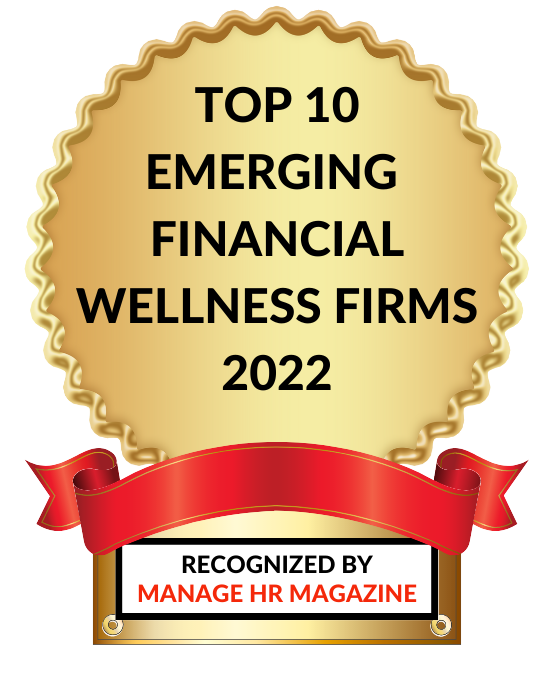Don’t let a volatile market burst your retirement bubble. Here are 5 useful tips!

Retiring is usually accompanied by celebration, but recent market volatility is adding a measure of doubt for those nearing or at the start of their retirement. That volatility, coupled with factors such as rising interest rates and high inflation, has many investors worried about their retirement funds and what they can do to weather the storm.
Over the past year, an estimated 1.5 million retirees have re-entered the U.S. labor market due to such factors as more flexible work arrangements, rising costs and the inability to keep up while on a fixed income. Additionally, according to the BMO Real Financial Progress Index, 25% of Americans feel they have to delay their retirement plans, primarily due to disrupted savings resulting from increased prices and market instability.
During this period of extreme uncertainty, near-retirees may be second-guessing if now’s the right time to stop working. But a down market shouldn’t cause interference with or delay retirement. By following the tips outlined below, impending retirees can stay on track with their plans, retire with more confidence and reduce the effect of a down market on their retirement portfolio.
1. Re-evaluate your risk tolerance
Early in one’s career, there are opportunities to take relatively more risk—for instance, investing more heavily in stocks with higher growth potential and risk, or investing in high-yield bonds. In a well-diversified portfolio, risk should primarily be measured by volatility rather than its most intuitive definition—permanent loss.
If a diversified portfolio is tailored to individual needs and objectives, its riskier portions should be diversified to minimize the risk of total loss and the negative impacts of volatility. Generally, as individuals get closer to retirement, their portfolio’s makeup may change to ensure they’re able to recover if the market goes south.
At Summerlin Benefits Consulting, we like to use the “Rule of 100”: Subtract your age from 100 to determine the percentage of your portfolio that should be placed in risk-prone areas such as stocks or bonds. For example, if you are 65 years old, it is a good rule of thumb to keep only 35% of your portfolio at risk and place the other 65% in safer areas.
“Easier said than done,” you might be thinking. But, stay with me! There are investment vehicles, such as Fixed Index Annuities (FIA) that are designed to offer a reasonable rate of return during market upswings and protect your money during market downturns.
These “safe money strategies,” as we fondly call them at Summerlin Benefits Consulting, create a healthy balance between protecting what you’ve already accumulated while allowing room for future growth. Given the market’s current condition, it’s important to talk with a financial professional to determine how to adjust your portfolio to lower risk, or to simply ask questions if you’re unsure where to start.
2. Don’t put all your eggs in one basket
Unfortunately, no one can predict what’s going to happen in the market, certainly in the short run, regardless of your level of expertise. Volatile times provide individuals the opportunity to revisit and re-evaluate their portfolios.
Spreading your money out across several different types of assets can lessen the impact of a market downturn, since different assets usually respond differently to market shifts. When doing so, it’s important to ensure your portfolio includes diversified holdings across asset classes and styles of investing, investments that generate income and hedging strategies to provide downside protection. In other words, it’s ok to keep some of your holdings in brokerage accounts, while placing the rest in an FIA for example. That way, you achieve “True Diversification”.
3. Review your cash reserves
Uneasiness in markets can cause individuals to be uneasy about their overall finances. As such, individuals should assess how much cash they feel comfortable having on hand to meet basic needs and unexpected expenses in order to feel more confident when markets are uncooperative. Creating a budget system that tracks monthly expenses can help.
It is also beneficial to have investments that offer liquidity should you need extra cash in a hurry. With an FIA, for example, they typically allow for a free 10% withdrawal each year, which gives added security by having access to your funds. Your financial professional can help you calculate your liquidity in order to help ensure you are maintaining an adequate emergency fund throughout retirement.
4. Try not to be influenced by your emotions
Market volatility creates a stressful environment for anyone with money in the stock market. For those on the verge of retirement, emotions lead many to sell when the market turns down in an attempt to avoid losses and then buy again after the market recovers and they feel optimistic. But getting the timing of those two decisions right to avoid missing a net gain along the way can be difficult.
If you look at market trends for the last several years, you will see overall gains until just recently. Even though it’s best not to jump the gun and sell everything the moment the market turns sour, it may still be a good idea to move some of your market holdings into safer, less risky areas before losing any more money.
If you are nearing or in the middle of your retirement, it could be detrimental to lose any portion of your nest egg, as you won’t have time to make it back up. And, quite frankly, it makes good logical sense to have some of your money safe from declines regardless of the current market climate.
5. Plan, plan, plan—but be flexible to adjust when appropriate
From the start of one’s retirement journey until the end, having long-term goals and a solid plan can help ease stress to a degree and keep you on course. If you’re unsure what to do next, or if you don’t yet have a solid plan, consider talking with a financial professional. Closer to retirement, there may be appropriate changes you’ll need to make to your portfolio to reduce risk, but don’t worry, the financial professional can help walk you through this to determine the best course of action for your individual situation.
The road to your retirement may not be as smooth as you once anticipated. It’s important to remember that there are many ways to protect your nest egg. Summerlin Benefits Consulting believes in making things simple for our clients so as to ease some of the stress of retirement planning. With safe options, providing features like guaranteed lifetime income and long term care benefits, we help you find the path that is right for you so that you can focus on putting the celebration back into your retirement decisions.






